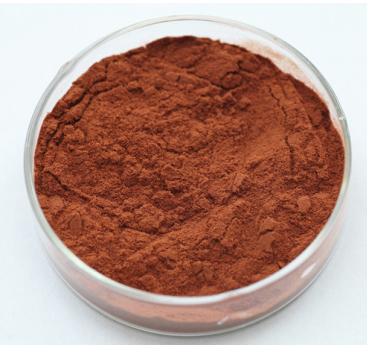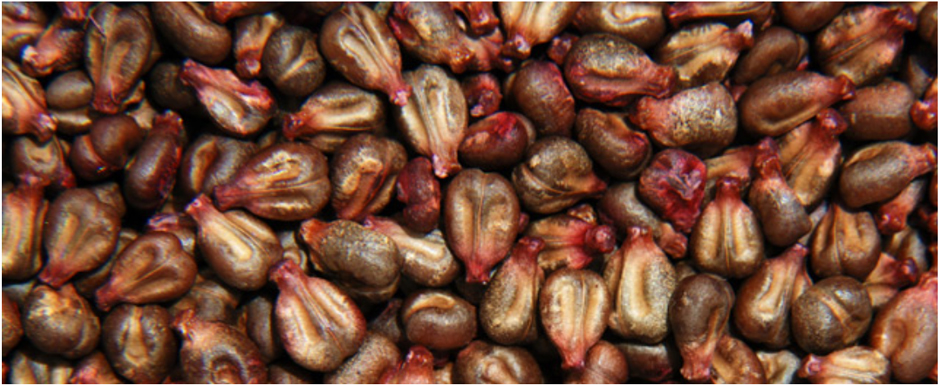New Delivery for Grape seed extract luzern
New Delivery for Grape seed extract luzern Detail:
[Latin Name] Vitis vinifera Linn
[Plant Source] Grape seed from Europe
[Specifications] 95%OPCs;45-90% polyphenols
[Appearance] Red brown powder
[Plant Part Used]: seed
[Particle size] 80 Mesh
[Loss on drying] ≤5.0%
[Heavy Metal] ≤10PPM
[Pesticide residue] EC396-2005, USP 34, EP 8.0, FDA
[Storage] Store in cool & dry area, keep away from the direct light and heat.
[Shelf life] 24 Months
[Package] Packed in paper-drums and two plastic-bags inside.
[Gerneral feature]
- Our product has passed the ID test by ChromaDex, Alkemist Lab. and other
third-party authoritative testing institutions, such as detection;
2. The pesticide residues match (EC) No 396/2005 USP34, EP8.0, FDA and other foreign pharmacopoeia standards and regulations;
3. The heavy metals in strict accordance with the foreign pharmacopoeia standard controls, such as USP34, EP8.0, FDA, etc.;
4. Our company set up a branch and import raw materials directly from Europe with strict control of heavy metal and pesticide residue. Aslo ensure the procyanidins content in grape seed is more than 8.0%.
5. OPCs over 95%, polyphenol over 70%, high activity, the oxidation resistance is strong, the ORAC more than 11000.
[Function]
Grapes (Vitis vinifera) have been heralded for their medicinal and nutritional value for thousands of years. Egyptians ate grapes a very long time back, and several ancient Greek philosophers spoke about the healing power of grapes — usually in the form of wine. European folk healers made an ointment from the sap of grapevines to treat skin and eye diseases. Grape leaves were used to stop bleeding, inflammation, and pain, such as the kind brought on by hemorrhoids. Unripe grapes were used to treat sore throats, and dried grapes (raisins) were used for constipation and thirst. Round, ripe, sweet grapes were used to treat a range of health problems including cancer, cholera, smallpox, nausea, eye infections, and skin, kidney, and liver diseases.
Grape seed extracts are industrial derivatives from whole grape seeds that have a great concentration of vitamin E, flavonoids, linoleic acid and phenolic OPCs. The typical commercial opportunity of extracting grape seed constituents has been for chemicals known as polyphenols having antioxidant activity in vitro.
Product detail pictures:

Related Product Guide:
Our advantages are lower prices,dynamic sales team,specialized QC,strong factories,high quality products and services for New Delivery for Grape seed extract luzern , The product will supply to all over the world, such as: Swansea, Austria, Kuala Lumpur, Our company has already have pass the ISO standard and we are fully respect our customer 's patents and copyrights. If the customer provides their own designs, We will guarantee that they will be the only one can have that products. We hoping that with our good products can bring our customers a great fortune.
What’s the connection between soy and estrogen? Should you be concerned? Watch to learn more!
You may have heard there’s a connection between soy and estrogen, and even that soy contains estrogen. It doesn’t. Not quite, anyway. But it does contain compounds that mimick it, and there still may be concerns if you consume a lot. Watch to learn more!
Subscribe: https://www.youtube.com/user/ultimatefatburner/?sub_confirmation=1
Is soy protein safe?: https://www.ultimatefatburner.com/bodybuilding/soy-protein-review.html
Soy
https://www.ncbi.nlm.nih.gov/pubmed/11431339
https://www.ncbi.nlm.nih.gov/pubmed/11577007
Soy based infant formulas (clinical data):
https://www.ncbi.nlm.nih.gov/pubmed/15047678
https://www.ncbi.nlm.nih.gov/pubmed/22449212
Hey everyone, Paul from Ultimate Fat Burner.com here and today we’re look at the soy and its connection to estrogen and whether that’s something you need
to worry about.
And, if you stick around to the end of the video, I’m going to give you some real practical advice on using it properly. I’ll be right back in just a couple
of seconds, stick around, don’t go anywhere!
Alright, welcome back.
So let’s talk about soy and estrogen. What’s the deal, what’s going on, is it nonsense is it not nonsense? What do you need to know.
Well, soy and soy products contain 3 isoflavones called…
Genistein (gen-e-steen)
Daidzein (daid zeen)
glycitein (gly ce teen)
These isoflanoes are known as phytoestrogens, which are plant compounds which mimick the female hormone estrogen.
Guys, if you ever found yourself trying on your girlfriend’s clothes or watching the notebook after a big feed of tofu and soy milk, this is why.
OK, sorry that was silly and I am only kidding, but it actually cuts to the chase about the concern with soy products, and that is that these estrogen
mimicking compounds that can actually interfere with the normal function of hormones in the body, and as a result have a negative effect on all sorts
of things, including reproductive hormone levels and sperm counts in men.
In addition, animal studies show that these compounds can also cause breast cancer, and in human studies, some women who supplemented with soy protein saw
an increase in the number of epethial cells in the breasts, which is important because these are the cells that are most likely to turn cancerous. To
make things even more confusing some observational studies suggest women who consume soy and soy products actually have a lower risk of breast cancer.
And as a result, you’ll hear all sorts of things about soy and soy products; that they are essentially poison and toxic and you shouldn’t eat them and
bla-bidy-bla-bidy blah and on the other hand you have folks telling you there’s nothing to worry about, soy is wholesome and healthy and people have been
eating soy and living happily ever after for 100′s of years.
The truth is that the science on the dangers of soy consumption is conflicting and contradictory and there’s not enough conclusive to suggest whether
or not soy consumption presents dangers, and more importantly, how much is dangerous.
For almost every study that you can dig up showing a negative effect, you can find another one to contradict it.
I realize tht’s not particlarly helpful, so let me much needed context to the discussion about soy and estrogen….
1) Soy isn’t the only food we eat that contains the phytoestrogens we’ve been talking about today. They’re common in many legumes also in our diet.
2) While humans have certainly eaten soy for 100′s of years, it’s only recently that we’ve gained easy access to foods like soy milk and soy protein
which makes it easy to consume super-high, almost concentrated levels of these phytoestrogens without consuming a single soy bean.
3) There’s an old saying – It’s the dose that makes the poison”
In my opinuion, that certainly applies here; the occasional use of soy and soy products is not going to hurt you and may
even be beneficial. However, if you drink soy milk regularly, eat tofu and supplement with a soy based protein powder on a regular basis, you’re more at
risk to suffer the side effects and the dangers, should they actually turn out to be an issue, and we’re not 100% sure that they are yet.
So what’s the bottom line here? What’s a practical recommendation for soy consumption?
Use common sense.
My personal recommendation is don’t worry about the occasional use of soy products, but I would think carefully about regular, repeated use of them,
especially those foods that make it really easy to consume a lot of soy constituents … soy milk or soy protein powder.
Video URL: https://www.youtube.com/watch?v=eDJzNhlF3po
It is not easy to find such a professional and responsible provider in today's time. Hope that we can maintain long-term cooperation.






